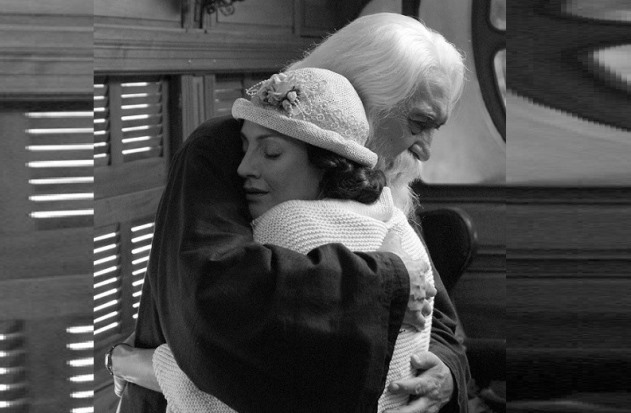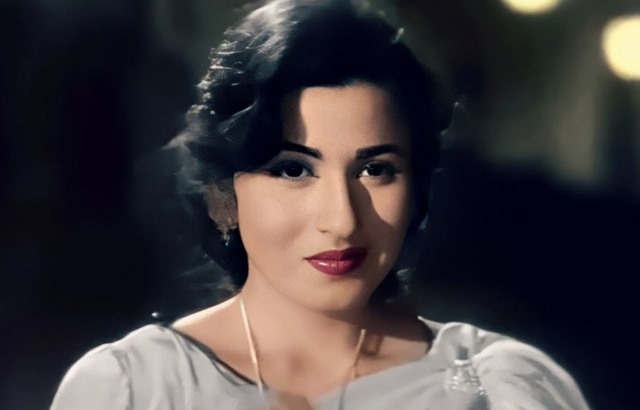
Thinking Of Him – Tagore’s Platonic Tryst
She heard of his death, at 80, on radio. She was driving one of those slow, lethargic, vintage cars across the sea-landscape, somewhere in Europe, perhaps. She stopped the car and lighted a cigarette, the tobacco smoke drifting into the solitary stasis of saline soliloquy. No, she did not cry. Her lips sealed, there were no tears in her eyes.
Victoria Ocampo cried but once, merely for a slipping, unspoken-sentence, and they were not even tears. They were like words and silences which hide their own language in the poetry of the great man, which she was reading, in her home at Beunos Aires in Argentina. She was not crying. She was holding something back.
So what is it that she is forever holding back and why?
My friend, social scientist, and old friend from JNU, Avijit Pathak says that Rabindranath Tagore was an “ocean of tears”. Despite the fact that he celebrated a luminescent rainbow of pulsating songs, poetry,T dance drama, paintings, stories and novels, which experienced, absorbed and transcended the kaleidoscope of all felt emotions, from the innocence of Kalboishaki childhood, to the pulsating ecstasies and romance of the teenage years and youth of Bengal, until the weary wisdom of middle and old age, when life is rapidly passing by never ever to return, one full moon-tide at a time, across the meadows of memories and insomnia which remain etched.
So, why does it seem to be only an ocean of tears, held-back?
It’s not that creative genius would always be solitary and sad. It’s not that the world almost always compels her and him to be one. It’s just that life is like this only.
Personal tragedies ravage the inner self, like the death of loved ones. It’s like the end of love — which is death itself. Tagore went through all that and more.
There are other tragedies too, like the Jalianwallah Bagh Massacre in Amritsar during the protracted freedom movement in British Punjab, against which he decisively protested. And, yet, undoubtedly, these tragedies did not bog him down into eternal despair – he chased the realism and illusion of the heady and spontaneous beauty and passion of daily aesthetics like an everyday addiction. This is what he left for us, and not only in the lanes and bylanes, river shores and village squares of Shonar Bangla in East and West Bengal, but in the essential landscape of the shared, collective public space, where angst, longing and thirst must finally and always win the battle against despair and fatedness, and joy should deliberately defy the permanence of pain.
ALSO READ: Gangubai, A Quest For Legitimacy
After his death, in her telegram to her son at the famous Jorashonko Thakurbari, the Tagore residence in Old Kolkata, Victoria Ocampo wrote: “Thinking of him, and all of you.”
She might have simply written: Thinking of him.
Thinking of him. The new film made by Argentine director Pablo Cesar was released in May in theatres across India, and at the Rabindranath Tagore Cultural Centre at Ho Chi Minh Sarani in Kolkata, named after the Vietnam guerilla war legend, ironically, bang opposite the United States Consulate. The release marked the 161st birth anniversary of Tagore. The Indo-Argentine film has been co-produced by Indian filmmaker Suraj Kumar, a former student in JNU, Delhi. The film explores the sublime relationship of the poet with Victoria Ocampo, who had idealized Tagore since she had read the French translation of Gitanjali.
It stars brilliant Victor Banerjee as Tagore, Argentine actor Eleonara Wexler as a deeply sensitive Victoria, Raima Sen as an intelligent resident of the Viswabharati University campus set up by Tagore in Shantiniketan, Bolpur, Bengal, and Hector Bordoni, a troubled Argentine school teacher who discovers Tagore and wants to learn how teaching is de-schooled in non-conformist Shantiniketan so that he can take the pedagogy onwards to school students in his own country.
Separated from his father and tormented by a disturbed childhood, the knowledge, humanism, and landscape, the songs and the football, along with the subtle, understated friendship of Raima, helps him resurrect into a new man. Thereby, rehabilitated from the terrible memories of his childhood, finally, he says goodbye to this beautiful journey, taking a rickshaw to the railway station, leaving an undisclosed letter in a brown envelope pinned on the door for Raima.
Speaking about the film, Victor Banerjee said, “The film is about what Victoria Ocampo thought of Tagore and it not about what you and I think of Tagore… She was half his age when they met, but there was something beyond mere admiration in their relationship…”
One of the last journeys Tagore made in his life was to Iran. Earlier, he had travelled to London and Europe where he was hosted with great love and passion by some of the finest minds of his time. He travelled all the way to distant Princeton and met Einstein. He also travelled to China along with great painter Nandalal Bose, where his poetry was translated into Chinese.
On his long ship journey to Peru to participate in the centenary celebrations of the country’s independence, he had to stop at Buenos Aires in 1924, due to illness. He needed a place to stay. This is where Victoria Ocampo, 34, a total stranger, welcomes and rediscovers him, gives him shelter, music and love, as Tagore recuperates, old, lonely and undefeated.
The director has picked up the original threads of this special and sublime encounter, across huge spatial distances, as Tagore, then 63, found in this home away from home, the beauty of the river Plata from his balcony, itself like a sea, and the garden which sheltered him in his 58-day stay. This is at once spiritual and platonic, but it is tangible and loaded with hidden substances and meanings, like human touch; this relationship between him and Victoria.
He touches her face in a moment of sudden affection, but never really touches her face. It is always a communication which is hidden, like with trees, the wind, the river. Always at a distance, and distance itself melts into a strange togetherness.
Finally, when they hug, it is a fleeting embrace. Not the embrace of death, but that of life, love; love and life’s eternal zone of possibilities.
Of all the great cinema that I have seen, including from Europe and Latin America, this meeting of the mind and heart in a physical embrace, with Tagore and Victoria, is stunningly moving in this film. The moment heals. So sacred and enduring, that it stays.
Later, Tagore visits Paris. She organizes a successful exhibition of his paintings in 1930. In a lovely moment of shared friendship, she jokes that all the people who have come to the art gallery, including the women, want to meet him so ardently. So he must be quite a favourite of the ladies when young! Tagore waits, and then laughs wickedly and whole-heartedly: Yes, he says. Yes.
In the last moments of this sensitive film, Tagore is leaving on a train. He sits at the window, his hand on the glass of the window which is shut, his face “an ocean of tears”. He knows he will never see her again. She puts her hand on the glass. She touches his hand.
The train moves. As the Tagore song says: ‘Tomaar holo shuru.. amaar holo shara…’
For you, it is the beginning… for me, it is the end.



